
15 Life on Land (152)
Protect, restore and promote sustainable use of terrestrial ecosystems, sustainably manage forests, combat desertification, and halt and reverse land degradation and halt biodiversity loss
Swap seeds and stories and sample local pawpaws at first Pawpaw Festival
KNOXVILLE — Multiple wildcrafters, seed collectors and general treehuggers — and wild critters — here and throughout the Southern Appalachians are really getting into wild pawpaw trees and their fruit.
Asimina triloba, the American papaw, is native to hardwood forest understories of the eastern United States, including the rich oak, hickory and maple forests of the Appalachians. It can be cultivated on private land or urban food plots, and of course grows richly in area forests. Its fruit is widely described as custard-like in texture.
There is a growing critical mass of pawpaw fans to meet occasionally and swap seed and its Knoxville’s turn to recognize the humble yet mighty local fruit. The first of what is planned to be an annual event is set 6 p.m. Aug. 31 at the Trailhead Beer Market, 1317 Island Home Ave.
Land donation protects Obed-area wildlands on eastern fringes of Cumberland Plateau
Written by Ben Pounds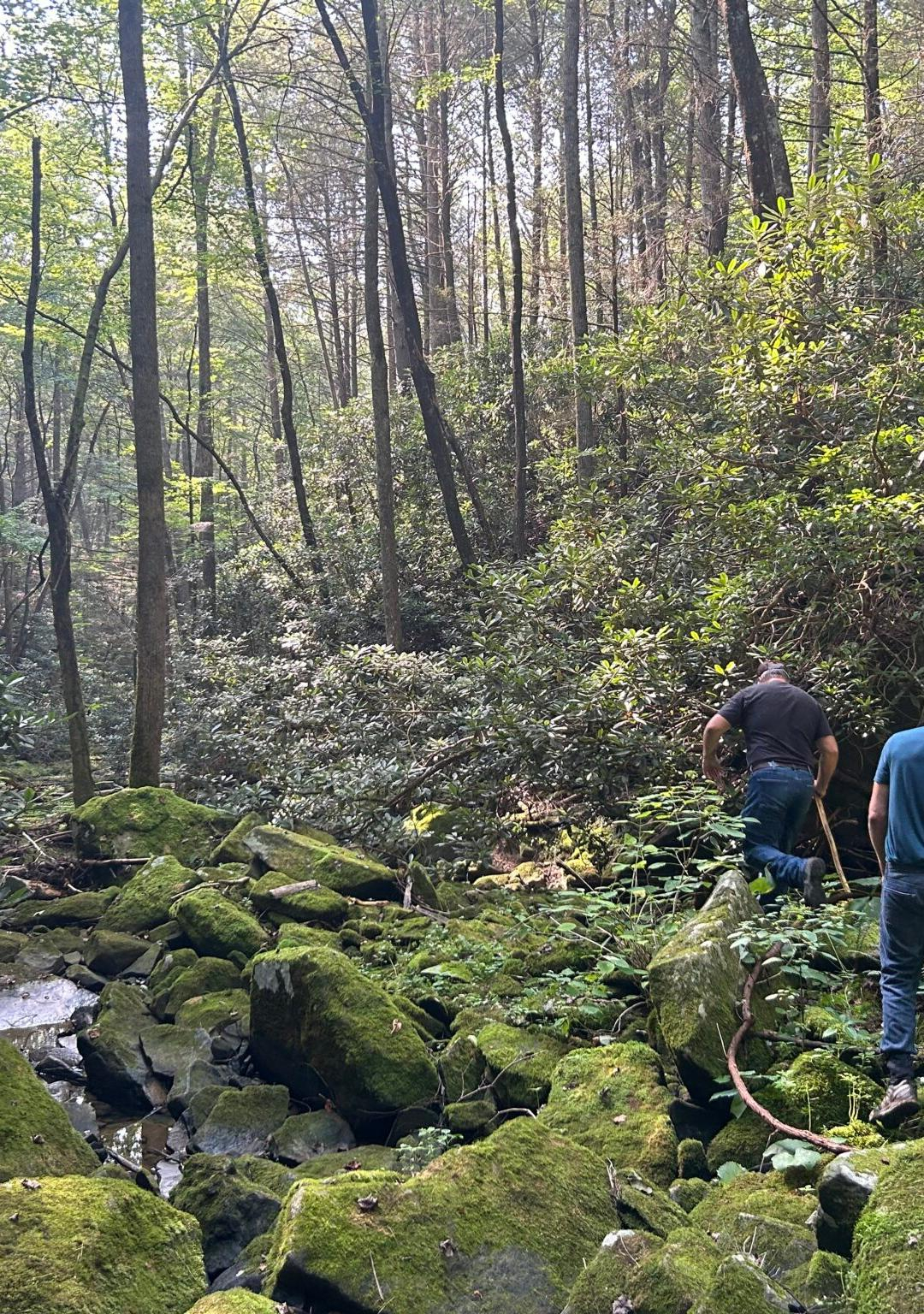 Hikers walk along Ramsey Creek during a dry time. Tennessee Citizens for Wilderness Planning has assembled land to be turned over to the National Park Service to expand public lands at the Obed Wild and Scenic River. Chuck Estes/Tennessee Citizens for Wilderness Planning
Hikers walk along Ramsey Creek during a dry time. Tennessee Citizens for Wilderness Planning has assembled land to be turned over to the National Park Service to expand public lands at the Obed Wild and Scenic River. Chuck Estes/Tennessee Citizens for Wilderness Planning
There’s more room to roam in the Cumberlands thanks to Oak Ridge-based citizens group
WARTBURG — As East Tennesseans and tourists alike enjoy summer fun on the wild Obed River, enthusiasts are growing its amount of federally protected land.
Part of the U.S. National Park Service system, the Obed Wild and Scenic River in Cumberland and Morgan Counties on Tennessee’s Cumberland Plateau offers swimming, hiking, picnicking, kayaking, fishing and climbing at the federally protected park. It currently includes about 45 miles along streams like the Obed and Emory Rivers.
Residents of Oak Ridge, a little less than an hour’s drive away, created Tennessee Citizens for Wilderness Planning (TCWP) and lobbied to create the federally protected area in 1976. Now, the same group, through fundraising and land swaps with anonymous private individuals, has gained 30 acres on which it plans to build a trail connected to the federal land.
- obed national wild and scenic river
- tennessee citizens for wilderness planning
- tennessee land preservation
- cumberland mountain quail
- cumberland plateau
- cumberland hiking
- new hiking trails in east tennessee
- hiking in tennessee
- recreation
- fishing
- kayaking
- climbing
- ramsey creek
- national park service
- hellbender
- citizen action
Help tally bumblebees for a regional atlas at Harris Farm

ROCKFORD — Join Foothills Land Conservancy staff the morning of Friday, July 25, 2025, at the Harris Farm as we work on our 2nd survey for the SE Atlas Bumble Bee Survey efforts this summer.
This free event (with a suggested donation $10) is a great opportunity to explore the Harris Farm, visit our native pollinator meadows, and assist our team for a great cause!
Be sure to save-the-date for our August survey, which will be held the morning of Friday, Aug. 22, 2025, at the Harris Farm.
What is the Bumble Bee Atlas?
The Atlas is a community (aka citizen or participatory) science project aimed at gathering the data needed to track and conserving bumble bees. The current data suggests that many species of bumble bees face an uncertain future, and there is a lack of data needed to implement effective conservation measures, especially at the regional scale. “Community science” means anyone is welcome to participate and help contribute to a better understanding of bumble bee needs.
John Skinner will be assisting the FLC staff with this survey. John is a retired Professor and Extension Apiculture Specialist in the Department of Entomology and Plant Pathology at the University of Tennessee. John’s knowledge and instruction is super helpful and we are excited that he can join us this year too.
A happy ending and new beginning after a sad story at Appalachian Bear Rescue
Written by Hellbender Press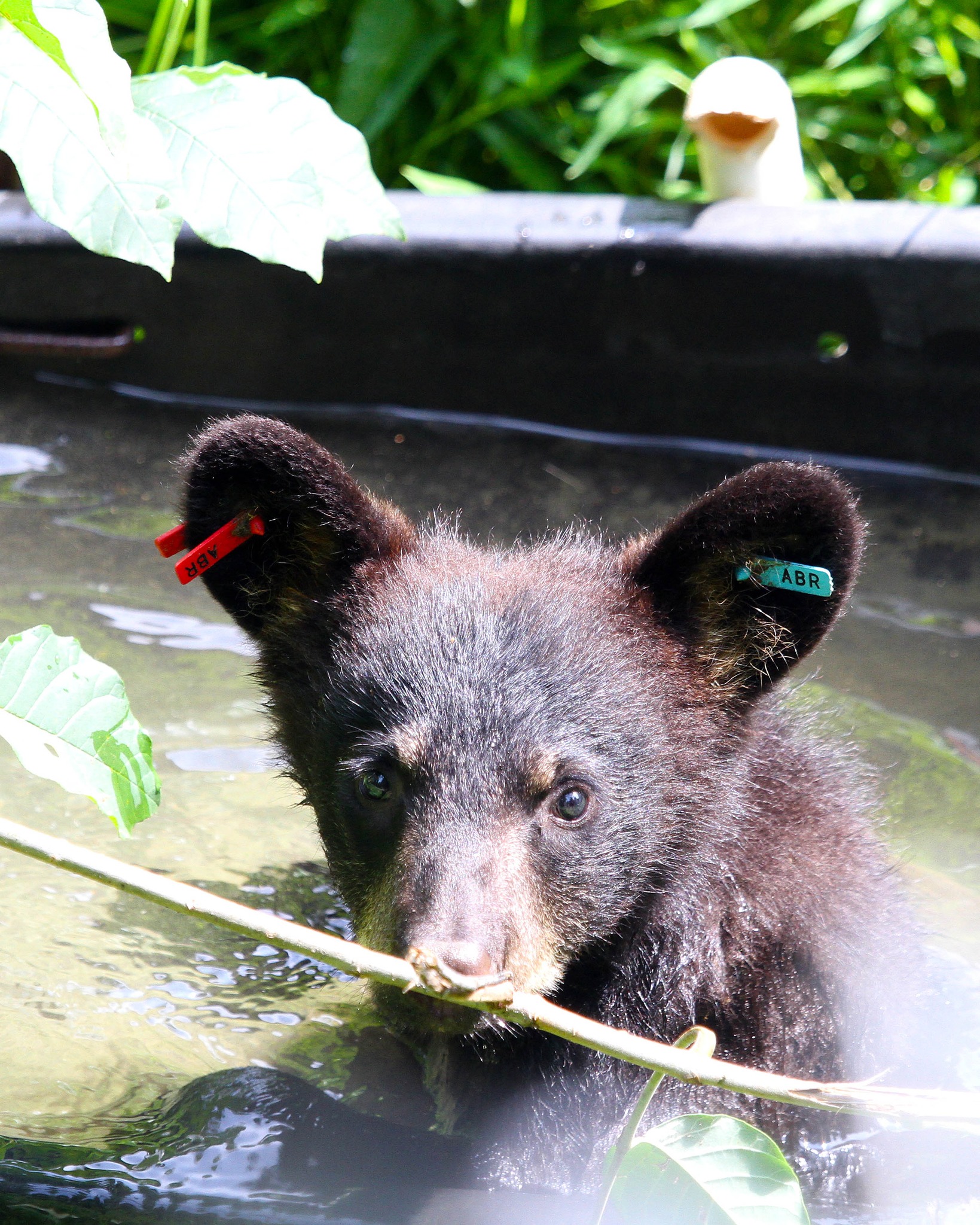 Rosemary Bear (class of 2022) cools off in a cub tub (all to herself this time, thank you) on a hot July day at Appalachian Bear Rescue in Townsend. The center entered a new agreement with licensing authority Tennessee Wildlife Resources Agency that calls for improved sanitation, regular pen rotation and burnovers and other management techniques. TWRA euthanized 13 bears in December 2024 following fatal and persistent strains of pneumonia. The center has been closed since; ABR director Greg Grieco said on July 22 the facility expects to complete renovations and be ready for the next crop of orphaned and injured bears by spring 2026. Appalachian Bear Rescue
Rosemary Bear (class of 2022) cools off in a cub tub (all to herself this time, thank you) on a hot July day at Appalachian Bear Rescue in Townsend. The center entered a new agreement with licensing authority Tennessee Wildlife Resources Agency that calls for improved sanitation, regular pen rotation and burnovers and other management techniques. TWRA euthanized 13 bears in December 2024 following fatal and persistent strains of pneumonia. The center has been closed since; ABR director Greg Grieco said on July 22 the facility expects to complete renovations and be ready for the next crop of orphaned and injured bears by spring 2026. Appalachian Bear Rescue
TWRA and bear rescue center reach agreement to resume rehab services at Townsend facility next year
This is a joint release from the Tennessee Wildlife Resources Agency and Appalachian Bear Rescue.
NASHVILLE — The Tennessee Wildlife Resources Agency (TWRA) and Appalachian Bear Rescue (ABR) have reached a new partnership agreement for black bear rehabilitation in Tennessee.
During the course of 2023 and 2024, the presence of pneumonia raised initial concerns about the health of bears being housed at ABR. After a difficult decision in December 2024 to euthanize 13 bears, the agency temporarily paused the placement of bears at the facility.
In the months that followed, TWRA staff sought input from bear managers, wildlife veterinarians and disease pathologists in other states on best management practices and pen sanitation measures such as discing, burns and leaving pens empty on an annual rotational schedule. ABR staff immediately started working to implement extensive modifications and upgrades to the facility to align with the recommendations of these professionals.
TWRA leadership also began working with ABR to draft an official operating agreement to strengthen the relationship between the two entities, set clear expectations for best management practices for bear rehabilitation and provide transparency to members of the public invested in wildlife conservation.
Sweet nectar of spring flows at annual UT pollinator festival
Written by Lauren Tolley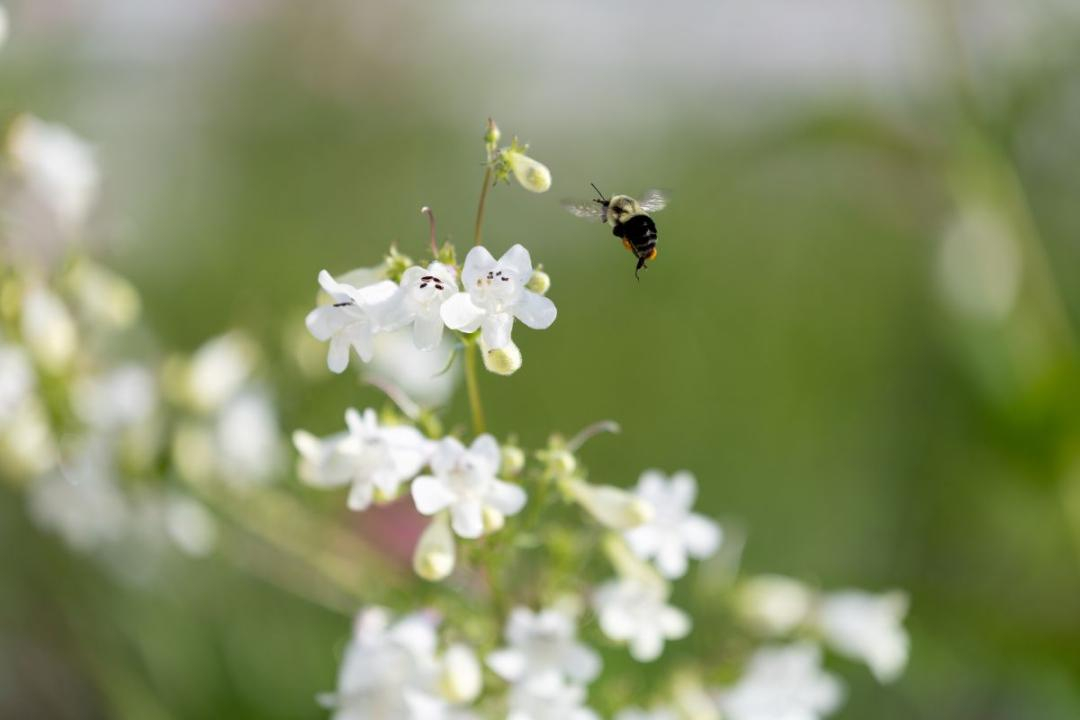 Pollinators play a vital role in maintaining our ecosystems, economies and agriculture. Here’s a bee in flight at the UT Gardens in Knoxville. R. Lazarian/UTIA
Pollinators play a vital role in maintaining our ecosystems, economies and agriculture. Here’s a bee in flight at the UT Gardens in Knoxville. R. Lazarian/UTIA
Get your buzz on in Knoxville or two other locations in the state during Pollinator Week June 16-25
Lauren Tolley is a University of Tennessee Institute of Agriculture marketing and communications associate.
KNOXVILLE — The University of Tennessee Bee Campus Committee, a group comprised of UT faculty, staff and students, in partnership with the Tennessee Valley Authority and UT Gardens, invites communities across the state to celebrate national Pollinator Week at a series of “Garden Buzz” pollinator events on June 17.
Pollinator Week is an annual celebration in support of pollinator health, initiated and managed by the Pollinator Partnership. This year’s theme is “Pollinators Weave Connections” — highlighting the essential roles pollinators play in creating and expression of human culture, the food we enjoy and the beauty that surrounds us. Pollinator Week is June 16-25.
Similar to UT and TVA’s collaborative Garden Buzz celebrations in previous years, the 2025 Garden Buzz celebrations will offer participants opportunities to learn more about pollinators in Tennessee through educational activities. Attendees can also learn how to start their own pollinator gardens with locally grown plants that help support a thriving ecosystem.
Roles and history of riparian forests in Tennessee

Wednesday, May 14, 5:30 p.m.
South Side Garage
1014 Sevier Ave, Knoxville
For more information and RSVP go to “Green Drinks Knoxville” on Facebook
Join us on our NEW date, the second Wednesdays of the month
KNOXVILLE — Tennessee has a natural abundance of water resources and biodiverse ecosystems. Unfortunately, 60% of Tennessee’s waterways are not meeting federal standards.
Stream habitat has been consistently declining in the last several decades. Restoring and conserving high value riparian areas will be an essential part of combating the negative impacts of urban development.
Barriers to resources prevent communities from effectively tackling these projects on their own, severely limiting cohesive statewide efforts for water quality improvement.
Maddy Johnson will introduce practical methods of restoring a riparian area in various settings at no to low cost.
Green Drinks Knoxville is a social and professional organization that convenes open-minded folks to encourage education and conversation about the environment, green technologies, sustainable lifestyles, and more. Our events are free and open to the public. We welcome all and support racial diversity, gender equality and LGBTQ inclusivity.
Bees, fish and plants show how climate change is disrupting nature in 2 key ways
Written by Courtney McGinnis A bee pollinates an almond tree in an orchard. Concerns are growing that there is an increasing disconnect between pollinating plants and their pollinators due to climate change. David Kosling/U.S. Department of Agriculture
A bee pollinates an almond tree in an orchard. Concerns are growing that there is an increasing disconnect between pollinating plants and their pollinators due to climate change. David Kosling/U.S. Department of Agriculture
The problem with climate change isn’t just the temperature. It’s how fast the climate is changing.
This story was originally published by The Conversation. Courtney McGinnis is a professor of biology, medical sciences and environmental sciences at Quinnipiac University.
Historically, Earth’s climate changes have generally happened over thousands to millions of years. Today, global temperatures are increasing by about 0.36 degrees Fahrenheit (0.2 degrees Celsius) per decade.
Imagine a car speeding up. Over time, human activities such as burning fossil fuels, have increased the amount of greenhouse gases in the atmosphere. These gases trap heat from the Sun. This is like pressing the gas pedal. The faster the driver adds gas, the faster the car goes.
The 21st century has seen a dramatic acceleration in the rate of climate change, with global temperatures rising more than three times faster than in the previous century.
The faster pace and higher temperatures are changing habitat ranges for plants and animals. In some regions, the pace of change is also throwing off the delicate timing of pollination, putting plants and pollinators such as bees at risk.
Some species are already migrating
Most plant and animal species can tolerate or at least recover from short-term changes in climate, such as a heat wave. When the changes last longer, however, organisms may need to migrate into new areas to adapt for survival.
- climate change
- global warming
- climate change effects
- courtney mcginnis
- quinnipiac university
- climate change migration
- bees climate change
- fish climate change
- species diversity
- species extinction
- the conversation
- greenhouse gases
- plants and pollinators
- plants and climate change
- diapause
- phenological mismatch
- early blooming climate change
TN General Assembly slashes state wetlands protections
Written by Cassandra Stephenson Water collects among trees at the West Tennessee Wetlands Mitigation Bank — a wetland restored from its days as farmland — near the Loosahatchie River in Shelby County, Tenn. Karen Pulfer Focht for Tennessee Lookout
Water collects among trees at the West Tennessee Wetlands Mitigation Bank — a wetland restored from its days as farmland — near the Loosahatchie River in Shelby County, Tenn. Karen Pulfer Focht for Tennessee Lookout
Bill’s supporters call it a win for private property; opponents say it’s a loss for all Tennesseans
This story was originally published by Tennessee Lookout.
NASHVILLE — A bill slashing regulations for an estimated 80 percent of Tennessee’s non-federally protected wetlands headed to Gov. Bill Lee’s desk this week after receiving approval from the General Assembly.
The bill’s West Tennessee Republican sponsors — Rep. Kevin Vaughan and Sen. Brent Taylor — said the legislation removes onerous and seemingly subjective mitigation requirements for landowners and developers.
Environmental advocates and scientists said the legislation paves the way for the destruction of Tennessee’s natural resources.
The bill passed 71-21 with one abstention in the House, and 25-6 in the Senate.
Since the 1970s, wetland regulations in Tennessee have required developers and landowners to seek permission from the state before draining or altering wetlands. The swampy areas can host diverse species, soak up rain water and filter it as it seeps into groundwater tables, recharging aquifers. Alterations to wetlands required developers to pay for mitigation — efforts to preserve or restore other wetlands nearby.
- tennessee wetlands bill
- state wetland protections
- tn development lobby
- loosahatchie river
- shelby county wetlands
- cassandra stephenson
- wetland mitigation bank
- wetland protection rollback in tennessee
- wetland regulation
- wetland conservation
- wetland restoration
- wetland alteration
- isolated wetland
- southern environmental law center
- wetland mitigation
- blue oval city
- tennessee department of environment and conservation
- wetland benefit
- tennessee wildlife federation
- supreme court isolated wetland ruling
Wetlands protections built an industry. Rollbacks could erode it.
Written by Cassandra Stephenson and Delany Dryfoos Paul Stoddard, a principal at environmental consulting firm EnSafe, unlocks the gate to the West Tennessee Wetlands Mitigation Bank in Shelby County. EnSafe planted more than 50,000 trees to restore portions of this 250-acre wetland, creating credits for developers to purchase to offset destruction of wetlands elsewhere. Karen Pulfer Focht for Tennessee Lookout
Paul Stoddard, a principal at environmental consulting firm EnSafe, unlocks the gate to the West Tennessee Wetlands Mitigation Bank in Shelby County. EnSafe planted more than 50,000 trees to restore portions of this 250-acre wetland, creating credits for developers to purchase to offset destruction of wetlands elsewhere. Karen Pulfer Focht for Tennessee Lookout
Interests of all stripes push to preserve state wetlands protections against pro-developer pressure
This story is part of the series Down the Drain from the Mississippi River Basin Ag & Water Desk, an independent reporting collaborative based at the University of Missouri in partnership with Report for America, with major funding from the Walton Family Foundation.
LEWISBURG — Fourth-generation Middle Tennessee cattle farmer Cole Liggett lined up with scientists and environmental advocates in March to urge Tennessee lawmakers not to gut the state’s historically strong protections for wetlands.
Wetlands protection has been good business for Liggett. In addition to raising cattle, he’s a manager at Headwaters Reserve, a firm that developers pay to preserve and restore wetlands and streams so they can destroy them elsewhere, called mitigation banking. If lawmakers follow through on a plan to deregulate an estimated 80 percent of the state’s isolated wetlands, that will upend the industry in Tennessee and drive up prices for developers still required to pay for mitigation, Liggett testified.
Liggett works in a growing industry that operates more than 2,500 mitigation banks nationwide, earning an estimated $3.5 billion in revenue in 2019, according to a 2023 study funded by the Ecological Restoration Business Association.
The industry is built on demand spurred by the 1972 U.S. Clean Water Act, which requires developers to offset their damage to wetlands by building or restoring wetlands nearby.
But recent federal actions to shrink the scope of that law are pushing states to choose how strictly they will regulate wetlands. The consequences of those decisions not only threaten further degradation of land, water and wildlife, but also the fortunes of an industry that has made a big business out of conservation.
UT joins forces with two state agencies to promote healthy forests and their wildlife in Tennessee
Written by Katie Donaldson One of the goals behind a recent partnership among UTIA and state agencies is the promotion of heartier food species such as this oak. The new five-year agreement between the UTIA Tree Improvement Program, the Tennessee Division of Forestry and the Tennessee Wildlife Resources Agency focuses on developing locally adapted and genetically improved seed for future Tennessee forests. Allison Mains/UTIA
One of the goals behind a recent partnership among UTIA and state agencies is the promotion of heartier food species such as this oak. The new five-year agreement between the UTIA Tree Improvement Program, the Tennessee Division of Forestry and the Tennessee Wildlife Resources Agency focuses on developing locally adapted and genetically improved seed for future Tennessee forests. Allison Mains/UTIA
UTIA Tree Improvement Program and state agencies work together to protect and conserve the state’s forest resources
Katie Donaldson is a communications specialist for the University of Tennessee School of Natural Resources.
KNOXVILLE — A new, five-year agreement establishes how the state of Tennessee and a program in the University of Tennessee Institute of Agriculture will study and produce tree seedlings to promote the protection and conservation of Tennessee forests.
The UTIA Tree Improvement Program (UT-TIP), the Tennessee Department of Agriculture Division of Forestry (TDF) and the Tennessee Wildlife Resources Agency (TWRA) partnered on the agreement.
“Honoring our land-grant mission, we are excited about this partnership to responsibly research, develop, manage and conserve forest resources across the great state of Tennessee,” said Keith Carver, UTIA senior vice chancellor and senior vice president.
UT-TIP manages numerous seed orchards in East, Middle and West Tennessee with help from state and federal partners. It uses the orchards to provide the East Tennessee Nursery with locally adapted and genetically improved seed.
More...
Get down and dirty with history at Big South Fork celebration of spring
 A farrier demonstrates his skills during a past installment of the annual Spring Planting and Music Festival at Big South Fork National River and Recreation Area, set this year for April 26. National Park Service
A farrier demonstrates his skills during a past installment of the annual Spring Planting and Music Festival at Big South Fork National River and Recreation Area, set this year for April 26. National Park Service
ONEIDA — Step back in time and experience history in motion at the 25th Annual Spring Planting and Music Festival from 9 a.m.-4 p.m. April 26 at Big South Fork National River and Recreation Area.
Traditions of early Appalachian settlers come to life at this free, family-friendly event. Visitors are invited to immerse themselves in the heritage of the Big South Fork region with live demonstrations, traditional crafts, music and hands-on activities that showcase the self-sufficient way of life practiced by generations past.
Set against the picturesque backdrop of the Oscar and Lora Blevins farm sites and the Bandy Creek area, the festival offers a rare opportunity to experience traditional Appalachian life. Visitors will see a variety of demonstrations and hands-on activities that highlight the skills and craftsmanship of early settlers.
One of the festival’s most anticipated highlights is the plowing and planting demonstration with mule and horse teams at the Lora Blevins field.
Children and adults alike will enjoy exploring old-time toys and taking part in interactive exhibits that make history come alive. Live music will be provided by some of the region’s most talented musicians.
Murky dark money group backs state wetland deregulation
Written by Cassandra Stephenson Tennessee lawmakers are considering a bill that would roll back regulations for “isolated” wetlands that don’t have surface connections to waters of the United States. John Partipilo/Tennessee Lookout
Tennessee lawmakers are considering a bill that would roll back regulations for “isolated” wetlands that don’t have surface connections to waters of the United States. John Partipilo/Tennessee Lookout
Legal firm’s representative’s testimony focused on property rights in midst of pro-developer legislative push in Tennessee
This story was originally published by Tennessee Lookout.
NASHVILLE — A representative from the legal firm that fought for deregulation of American wetlands at the U.S. Supreme Court spoke Wednesday in support of a Tennessee bill that would roll back protections for up to 80 percent of the state’s isolated wetlands.
Tennessee lawmakers are considering a bill that would significantly reduce requirements for development on wetlands, swampy lands that support diverse ecosystems, soak up floodwaters and recharge groundwater.
A state House subcommittee voted 7-2 to advance the bill to the full House Agriculture and Natural Resources Committee, where it will be heard on April 1.
The state’s current regulations predate the federal Clean Water Act, which imposed the first federal protections for wetlands in the 1970s, requiring developers to compensate for destroying wetlands by preserving or restoring them elsewhere.
But the erosion of federal regulations in the last two years has given states more power to decide how they will define and protect wetlands.
- tennessee wetlands bill
- tennessee lookout environment reporting
- tennessee environment
- clean water act
- environmental deregulation
- trump environment
- tennessee general assembly
- house environment subcommittee
- bad environmental legislation
- are wetlands protected in tennessee?
- legal firm that fought for deregulation of american wetlands
- wetland protection rollback in tennessee
- sackett v epa
- pacific legal foundation
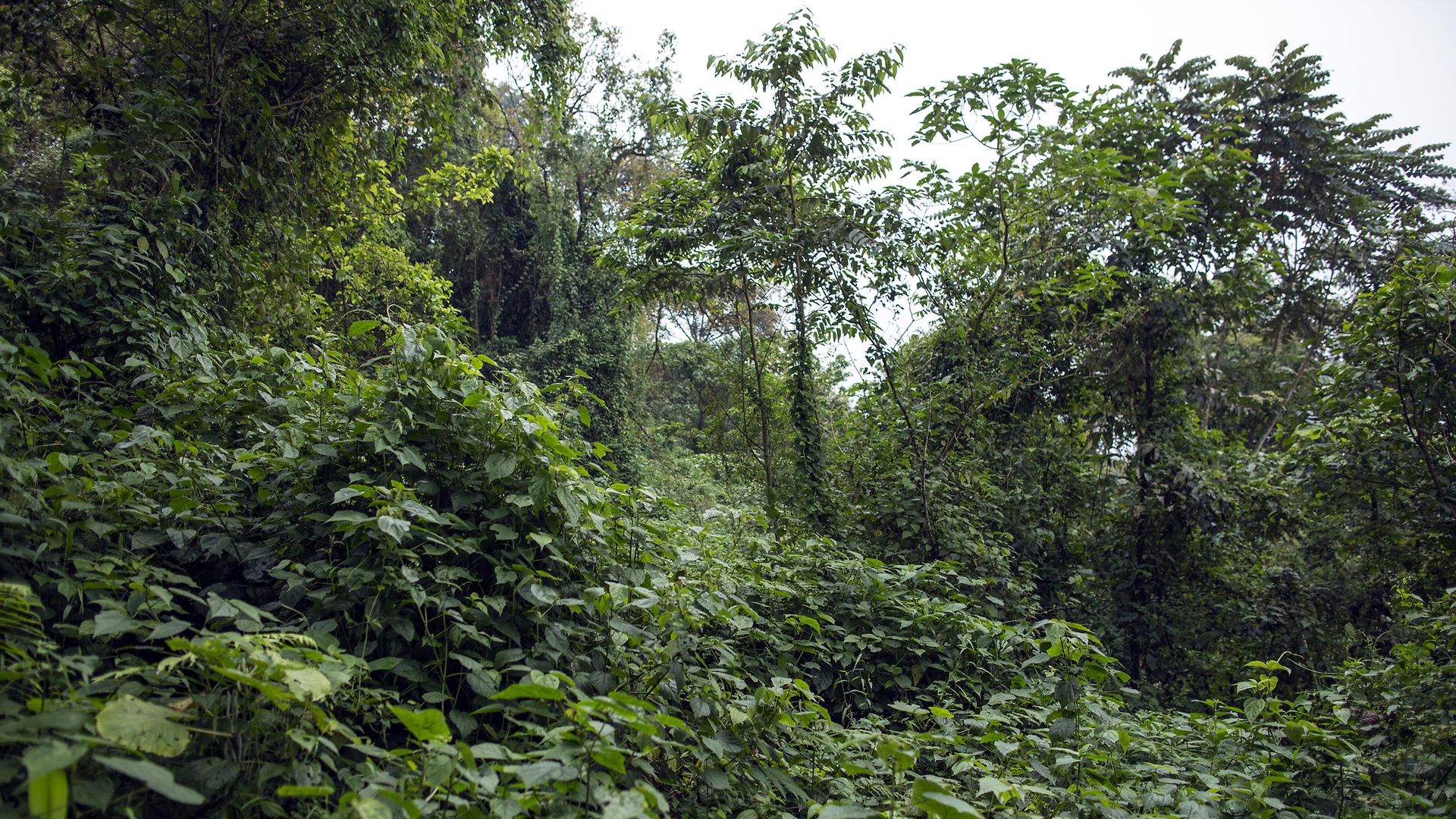 Cameroon’s vast and species-rich rainforests are of great importance for global biodiversity and the climate. They are also an important source of food and income for local people. A new study on hunting patterns in the jungles of West Africa includes research gathered by a University of Tennessee professor. Thomas Imo/German Federal Government
Cameroon’s vast and species-rich rainforests are of great importance for global biodiversity and the climate. They are also an important source of food and income for local people. A new study on hunting patterns in the jungles of West Africa includes research gathered by a University of Tennessee professor. Thomas Imo/German Federal Government
Adam Willcox subsisted on bush meat during African hunting study
Katie Donaldson is a communications specialist for the University of Tennessee School of Natural Resources.
KNOXVILLE — Data collected by a University of Tennessee research associate nearly 30 years ago is part of an extensive study that focuses on hunting patterns in African tropical forests.
Adam Willcox, a research associate professor in the UT Institute of Agriculture School of Natural Resources, co-authored the article, which was published recently in Nature Sustainability. “Regional patterns of wild animal hunting in African tropical forests” was also written by Daniel J. Ingram, research fellow at the University of Kent, and several other researchers. The data show how hunting management is needed to sustain wild animal populations in West and Central Africa.
The article uses data collected from 1991 to 2022 in 83 different studies to create a regional analysis of hunting patterns. Willcox contributed to the publication using research and data he gathered from 1996 to 2001 while promoting agroforestry in the U.S. Peace Corps in Cameroon. “I was in a lowland tropical forest. We did not have domestic alternatives for protein. We had to eat wild animals,” Willcox said. “My research followed 100 hunters around a wildlife sanctuary in Cameroon and their harvests.”
- university of tennessee professor ate research subjects
- adam willcox
- ut institute of agriculture
- human hunting patterns
- bush meat
- hunting management
- ut ag research
- nature sustainability
- wild animal populations in west and central africa
- biodiversity
- subsistence hunting
- agroforestry
- university of kent
Editorial: Old paradigms persist in proposed development of urban forest at UNC Asheville
Written by Noah Poulos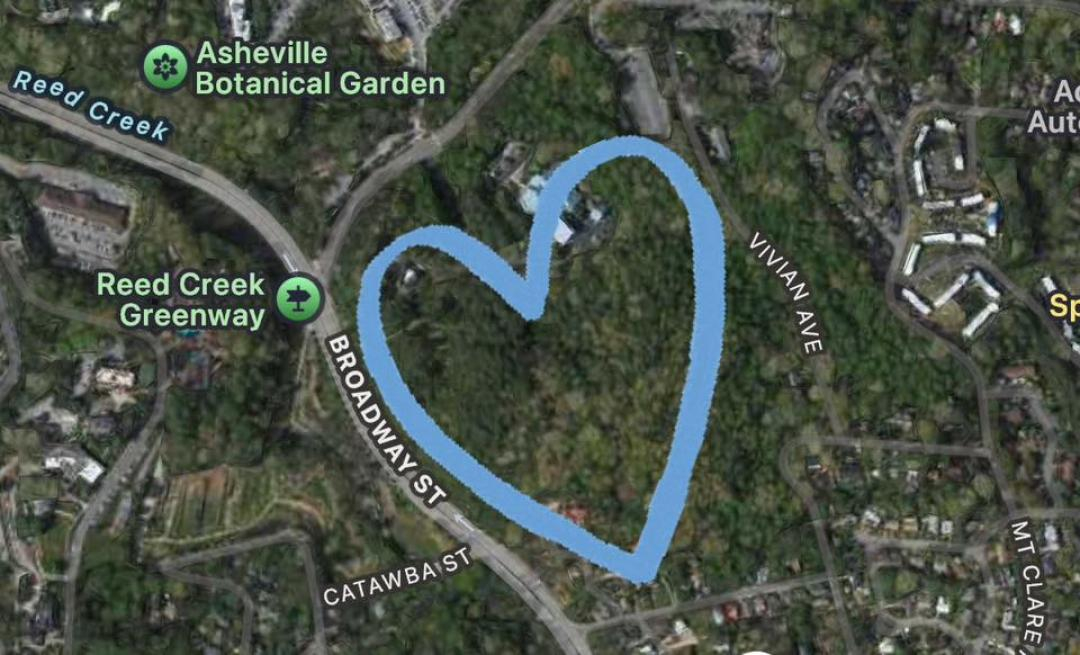 UNC Asheville seems poised to develop a 45-acre forested tract in North Asheville into university amenities and housing. A grassroots movement has emerged to fight the proposal, such as Save the Woods, which has 3,000 members on Facebook. Save the Woods via social media
UNC Asheville seems poised to develop a 45-acre forested tract in North Asheville into university amenities and housing. A grassroots movement has emerged to fight the proposal, such as Save the Woods, which has 3,000 members on Facebook. Save the Woods via social media
The university indicates development of 45-acre wooded property is pending as community rallies
Noah Poulos is a farmer, writer, educator and UNC Asheville graduate who lives in Western North Carolina.
ASHEVILLE — Many have come to know a small forest in North Asheville as an extension of their home.
In these humble woods of the Experimental Forest, near a botanical park and U.S. Forest Service research station, pileated woodpeckers peck vigorously in the canopy. Towering pines dapple the light on the forest floor as day turns to dusk.
It is a place that has become a mainstay of this community and people are deeply connected to it — through stories, memories, relationships and a deep appreciation for what a small woodland can offer.
This forest, while open to the public, is owned by UNC Asheville, which recently shared plans to develop it for additional campus amenities.
Opposition has arisen to the university’s development plans, especially since a statement from the institution that strongly implies development will proceed as part of an overall expansion and revenue plan.

